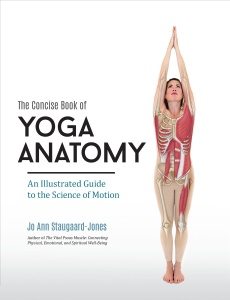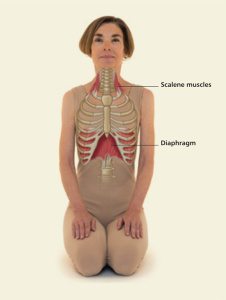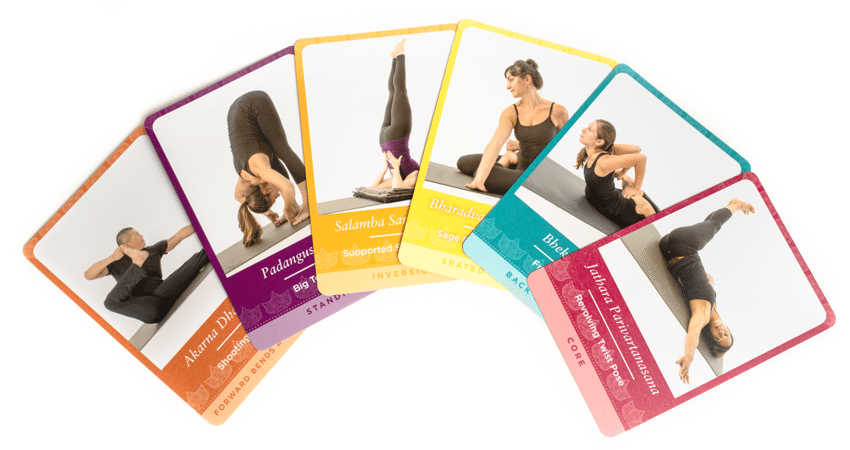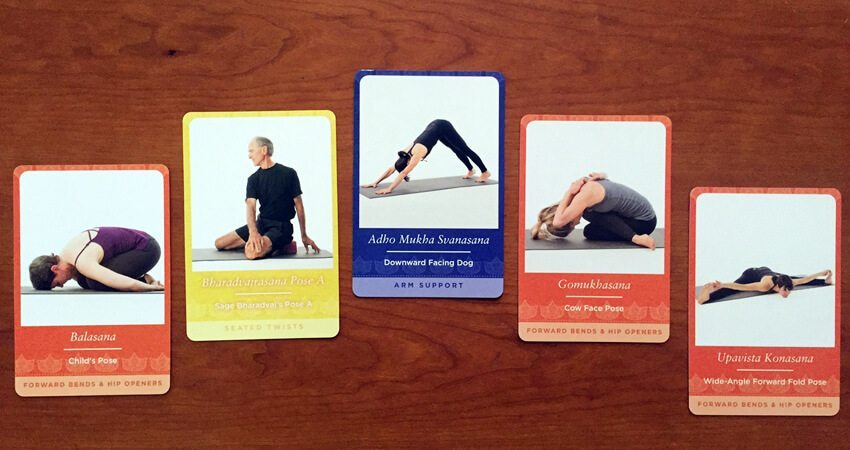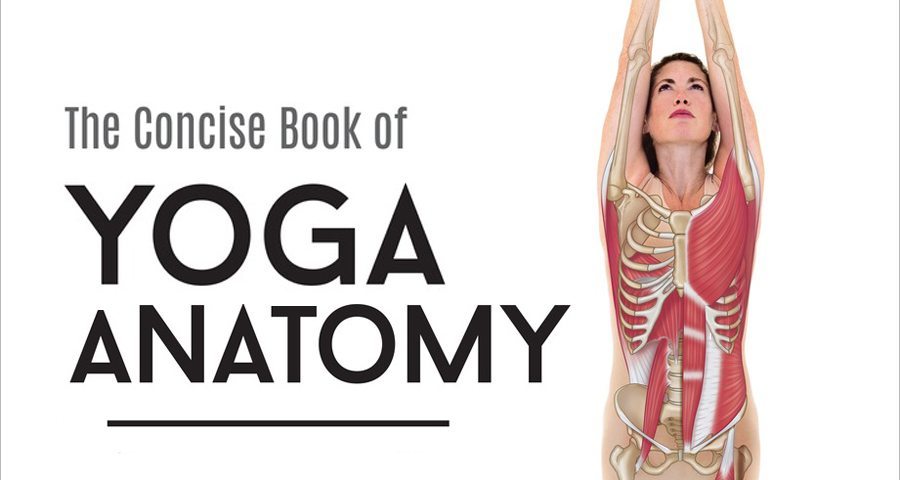
Enhance Your Yoga Practice with Jo Ann Staugaard-Jones
Categories: Bodywork & Somatics Excerpt Fitness & Sports
Excerpted from The Concise Book of Yoga Anatomy by Jo Ann Staugaard-Jones:
People do yoga for many reasons; whatever the basis, yoga is always a path to truth. This can be blocked if there is pain. My contribution in teaching Yoga Anatomy and Kinesiology is to help people be free from injury in asanas, and to become less mechanical and more aware, open, and able to move toward their own true selves.
It is my belief that yoga styles that include the limb of yoga called asana (which has evolved to become a term that signifies all yoga postures) should be taught and practiced in a way that is comfortable, stable, balanced, and without pain. Understanding the science of the body and of motion will help one to achieve this.
Below I’ve shared helpful tips, suggestions, and adjustments for well-known asanas with illustrations from my book.
Take the time to then realize the essence of the pose or movement in relation to the yogic way of life, for it is necessary to focus on the spiritual element of yoga as well as the physical—yoga is a union of the two.
As an example, when one sits in meditation in Sukhasana (Easy Pose), the postural aspects can be the beginning of the process, but as breathing and subtle energies are incorporated, the fundamental nature might be the stillness of the mind in order to reach inner awareness. Explore each posture and consider more deeply what the asana means for you.
Tags: Anatomy Yoga Ann Staugaard-Jones
Sukhasana (Easy Pose)
sukha = easy, comfortable, happy; (suk-HAS-anna)
Awareness: Breath, ease, centering.
Action and Alignment: Spinal extension, shoulder and girdle neutral, hip flexion and outward rotation, knee flexion. Weight of the torso is directly above the sit bones, with equal weight on both.
Technique: Cross the legs in a sitting position. Lengthen the spine and rest the hands on the thighs, in the lap, or extended on the floor.
Helpful Hints: This is a wonderful meditation and breathing posture, and can be done at any time during class. It is especially beneficial
at the beginning, where balance, centering, and harmony can be introduced. It is best to have the knees lower than the hips to help extend the spine, but for some people this is not “easy.” Sitting on a block or blankets will help. Uncross the legs and sit in a chair if there is strain.Counter Pose: Change the leg that is in front. After the asana has been performed in both leg positions, extend the legs and shake them out.
Vajrasana (Kneeling Pose)
vajra = diamond, thunderbolt; (vaj-RAHS-anna)
Awareness: Breath, rib cage expansion, centering, chakras.
Action and Alignment: Spine extension, shoulder and girdle neutral, hip and knee flexion. Weight of the torso is directly above the sit bones. Viewed from the side, the mid-ear, shoulder, and hip are aligned with each other.
Technique: Begin kneeling with the sit bones on the heels (toes can be tucked under or extended). The spine is lengthened. This can be performed at any time when the practitioner needs to focus inward.
Helpful Hints: This posture is ideal for many pranayamas and/ or meditation. If sitting upright with the legs underneath is uncomfortable, a block or blanket may be used under the sit bones or between the thighs and calves, as raising the hips will accommodate the knees to an easier bend, and put less stress on the ankles and feet. It is recommended to hold this position no longer than ten minutes.
Counter Pose: Purvottanasana
Janu Sirsasana (Head to Knee Forward Bend)
janu = knee; sirsa = head; (jahn-u shear-SHAHS-anna)
Awareness: Breath, stretch, stimulates organs, therapeutic, calming.
Action and Alignment: Spine extension, shoulder girdle stabilization, shoulder joint flexion, hip and knee flexion and extension, ankle dorsiflexion. Body is in straight line from the head to the hips.
Technique: From a sitting position, extend one leg in front and bend the opposite leg, placing that foot on the inside of the other thigh. Keeping the spine straight, hinge at the hips and reach forward with the hands, placing them on the straight leg. Anchor the sit bones and engage the core. Hold the posture and breathe deeply.
Helpful Hints: Relax the straight knee if the hamstrings are too tight. Keep the chest and shoulders square toward the front leg. Sit on a blanket for support. Once the position has been accomplished, the spine can flex, bringing the head toward the knee. This posture can be done at any time during class, and is considered a warm-up for Paschimottanasana (Sitting Forward Bend) with both legs straight.
Counter Pose: Purvottanasana
Virabhadrasana I (Warrior I)
Virabhadra = warrior or super- being from Indian mythology; (veer-ah-bah-DRAHS-anna)
Awareness: Breath, strength, stretch, rib cage expansion, core engagement, drishti (focus).
Action and Alignment: Spine extension to hyperextension, shoulder flexion, shoulder girdle elevation to depression, hip and knee flexion (front leg), hip and knee extension (back leg). Pelvis square to the front, front knee directly over ankle, back foot no more than a 45-degree angle from front, front heel in line with middle of back foot arch.
Technique: Stand in Tadasana, hands on hips; step back with one leg and position the lower body as stated above, bending the front knee. Inhale and lift arms as demonstrated, eyes forward or up. Two variations can be performed: one with the back foot at 45 degrees (only if the hips can still be squared to the front), and one with the back foot forward to aid in squaring the pelvis to the front (the stance would be more narrow). The core engages by dropping the tailbone, lifting the pelvic floor, and pulling the abdominals in and up.
Helpful Hints: This is a vigorous posture that helps warm up the body, if done toward the beginning of class, and is also used as a transitional pose. Focus on the breath and soften the intensity. Engage the core to protect the lower spine. Make sure the front knee is facing forward and not hiding the big toe. Press the outside edge of the back foot into the ground and pull energy from the ground up. Both feet are the foundation.
Counter Pose: Tadasana
Excerpted from The Concise Book of Yoga Anatomy
by Jo Ann Staugaard-Jones. © 2015, North Atlantic Books.

